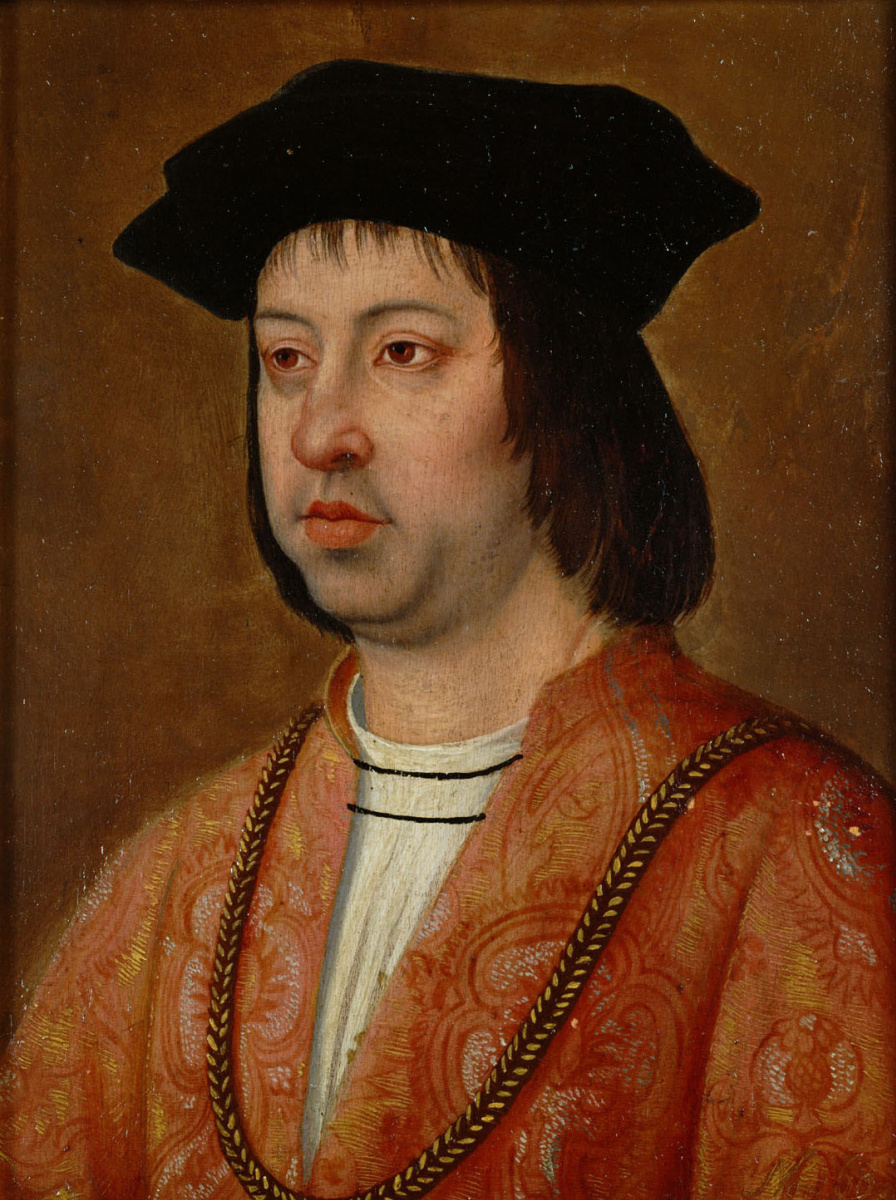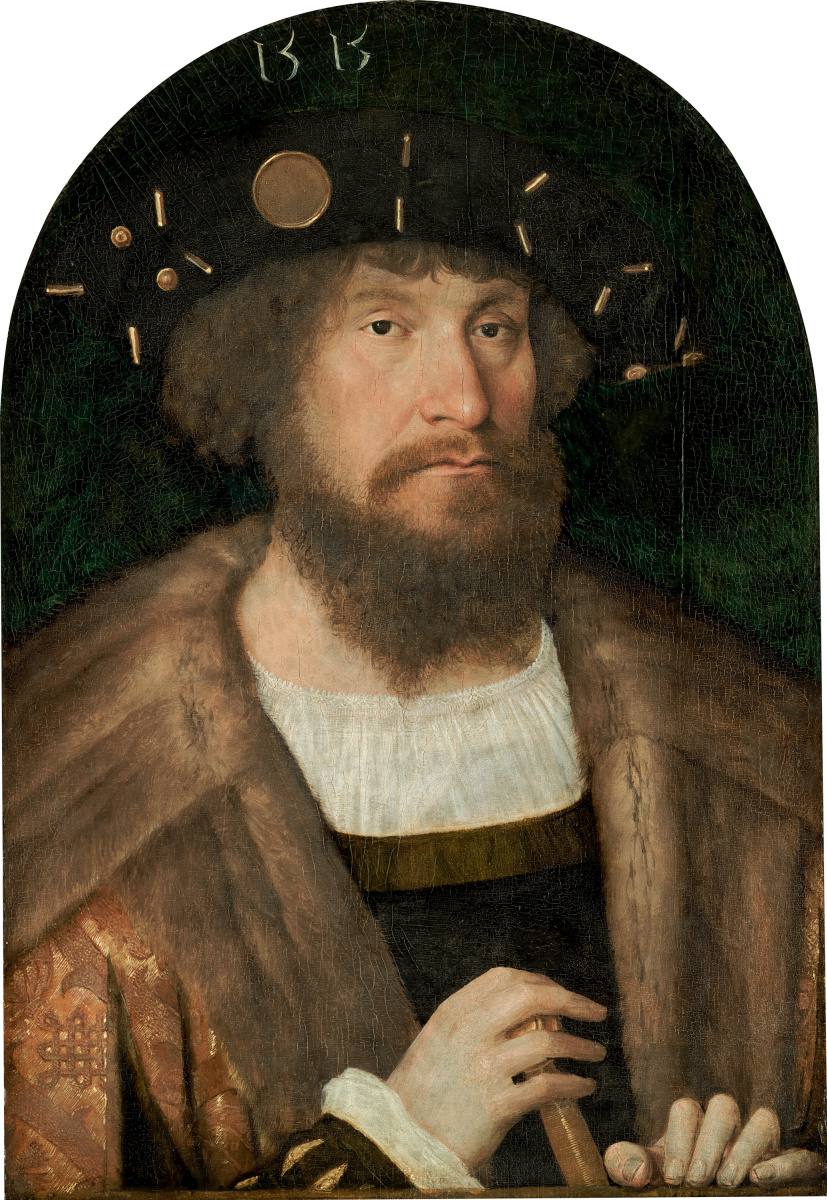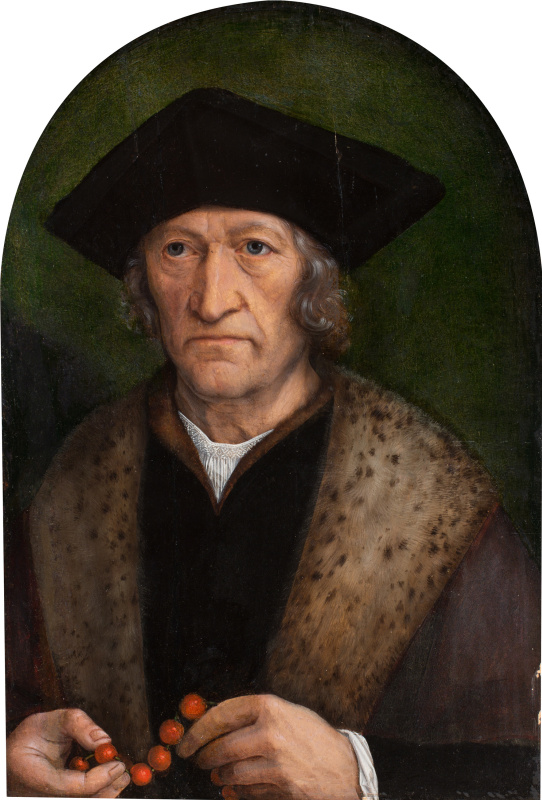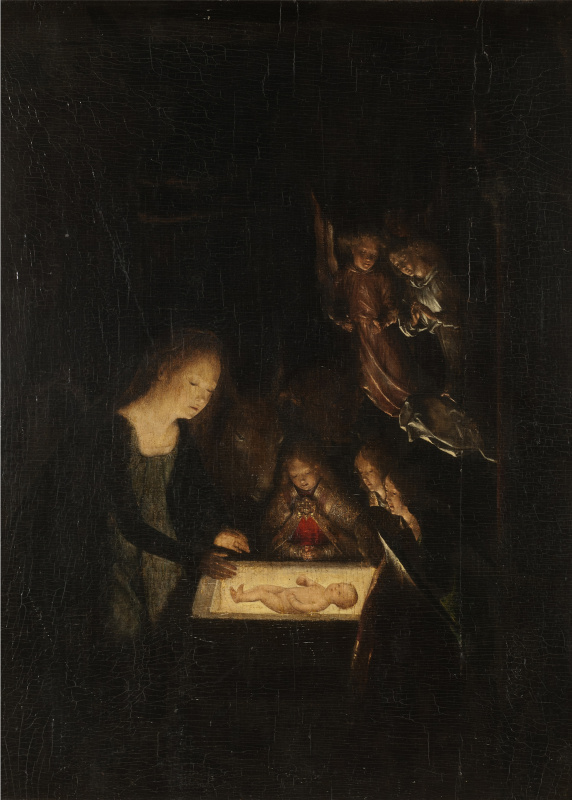The first monographic exhibition of Michel Sittow: Estonian Painter at the Courts of Renaissance Europe
To celebrate the centennial of the establishment of the Republic of Estonia, the Art Museum of Estonia, Tallinn, in cooperation with the National Gallery of Art, Washington presents a monographic exhibition of the itinerant court painter born in Estonia Michel Sittow: Estonian Painter at the Courts of Renaissance Europe. The show features some 20 works and brings together most of the artist’s known paintings, providing an exceptional opportunity to examine the rare and masterful works done in late 15th and early 16th centuries.

The artist's first largest monographic exhibition
The first large monographic exhibition of oil panels by Michel Sittow opened on January 28, 2018 at the National Gallery of Art, Washington, celebrating Estonian master of the early Netherlandish art.Undoubtedly, the greatest Renaissance artist from Estonia, Michel Sittow was one of the first painters of international significance to Europe in the late 15th-early 16th centuries. Having presumably studied in Brügge with Hans Memling, he then worked for the renowned European royals including King Ferdinand of Aragon (see bellow) and Queen Isabella of Castile, Philip the Handsome, Margaret of Austria and Christian II of Denmark.
King Ferdinand II (1452-1516) of Aragon
Start XVI centuries, 35×28.5×4 cm
Especially for the exhibition, the international project involving Europe and the United States brought Sittow’s rare oil panels from the world’s renowned museums and private collections to provide a unique platform for further studies of his work in art history context and to introduce the oeuvre of an extraordinary artist to a wider audience.
Through some 20 works, including 13 oil panels that represent most of the artist’s small oeuvre, the exhibition also offers an opportunity to examine Sittow’s art in relationship to his Netherlandish contemporaries, including Juan de Flandes (c. 1460−1519), with whom he possibly collaborated, Jan Gossaert (c. 1478−1532) who provides a context for understanding Sittow’s achievement, and Hans Memling (c. 1465−1494) who, as a likely teacher, influenced the Sittow’s style.
Through some 20 works, including 13 oil panels that represent most of the artist’s small oeuvre, the exhibition also offers an opportunity to examine Sittow’s art in relationship to his Netherlandish contemporaries, including Juan de Flandes (c. 1460−1519), with whom he possibly collaborated, Jan Gossaert (c. 1478−1532) who provides a context for understanding Sittow’s achievement, and Hans Memling (c. 1465−1494) who, as a likely teacher, influenced the Sittow’s style.
"The first monographic exhibition of Sittow’s work offers an opportunity to celebrate one of the masters of Early Netherlandish art," Earl A. Powell III, director of the National Gallery of Art, Washington said in a statement.
Highlights
Among the highlights of the exhibition are The Ascension of Christ (bellow left) and The Assumption of the Virgin (bellow right), two from a group of the forty-seven scenes illustrating the lives of Christ and the Virgin, painted by Sittow in collaboration with Juan de Flandes for Queen Isabel the Catholic. Only twenty seven of these now survive, the majority of which are thought to have been painted by Juan de Flandes or his studio.These two panels, however, are the only securely documented works by Sittow, and as such, cornerstones of our knowledge of his style. They are also outstanding as narrative subjects — the only known to us among the rest of his portraits and Madonnas — which apparently evidence Sittow’s high skills in delicate treatment of the figure in space.
Art historians believe that The Assumption of the Virgin might have influenced another Sittow’s contemporary — Joachim Patinir — in his painting of the same subject.
The exhibition also reunites two panels originally hinged together to form the devotional diptych—Madonna and Child (left) and Portrait of Diego de Guevara (?) (right). The dimensions of the two panels correspond to each other and the carpet covering a stone parapet on both pictures has the same pattern and ornament. The donor’s rapt contemplation of the Madonna and Child, conventional to such devotional paintings, is here conveyed with a poignant melancholy corresponding to Holy Virgin’s deep thoughtfulness.
Sittow worked for the Habsburg rulers of the Netherlands at various times during his wandering career. And now art historians claim that strong circumstantial evidence suggests that this diptych was painted for and represents a valued member of the Habsburg court, Don Diego de Guevara.
Sittow worked for the Habsburg rulers of the Netherlands at various times during his wandering career. And now art historians claim that strong circumstantial evidence suggests that this diptych was painted for and represents a valued member of the Habsburg court, Don Diego de Guevara.
Other highlights include portraits of nobles from the leading royal houses of Europe, among them Portrait of a Man (bellow) as well as a portrait linked to the Tudor court in England: Mary Rose Tudor (1496−1533), Sister of Henry VIII of England (see the title illustration), previously known as a portrait of Catherine of Aragón, and recently re-identified as the youngest sister of Henry VIII.
Portrait of a Man
1510, 35.9×25.8 cm
Who was Michel Sittow?
Michel Sittow was born in 1469 in Tallinn (then Reval), Estonia, where he probably received his earliest trainings in art from his father Clawes van der Sittow, who was a notable painter and a wood carver. Art historians suggest that he was the one who taught Michel basics of draughtsmanship and introduced him to the book graphics. By 1483, Sittow had moved to Bruges, the artistic center of the Netherlands at the time, to become an apprentice, possibly in the workshop of Hans Memling or an artist close to him. In Bruges, he mastered the insights of the Early Netherlandish painting, combining culmination of the northern European medieval artistic heritage with the new Renaissance ideals. In his works he made significant advances in natural representation and illusionism as well as in featuring complex iconography.
Nativity
1510-th
, 113×84 cm
In a while, Michel Sittow became an itinerant court painter specializing in portraiture and small devotional paintings. In 1492, he is recorded working in Spain, in the service of Queen Isabella of Castile and León. Upon her death in 1504, he may have worked for her son-in-law, Philip of Austria, the future King of Castile, and the following year he may have even traveled to England, as evidenced by his portraits of Mary Rose Tudor, Sister of Henry VIII of England (see on the title illustration), and of a woman as the Magdalene who has been tentatively identified as Catherine of Aragon (see above).
Sittow returned to his home city Reval in 1506 to settle the inheritance and stayed there, receiving membership in the local artists' guild late in 1507. He married in 1509, first time ever in forty years. In 1514, the artist left for Copenhagen to paint the portrait of King Christian II (see bellow), and from there continued to Spain and the Netherlands. He returned permanently to Reval in 1518 and married again, aged almost fifty. He lived in his native city as a prosperous and respected citizen until his death in late December 1525.
Sittow returned to his home city Reval in 1506 to settle the inheritance and stayed there, receiving membership in the local artists' guild late in 1507. He married in 1509, first time ever in forty years. In 1514, the artist left for Copenhagen to paint the portrait of King Christian II (see bellow), and from there continued to Spain and the Netherlands. He returned permanently to Reval in 1518 and married again, aged almost fifty. He lived in his native city as a prosperous and respected citizen until his death in late December 1525.
Portrait of the Danish King Christian II
1515, 30.8×22.3 cm
The exhibition is curated by John Oliver Hand, curator of Northern Renaissance
paintings, National Gallery of Art, Washington, and Greta Koppel, curator of Dutch and Flemish art, Art Museum of Estonia, Tallinn.
Michel Sittow: Estonian Painter at the Courts of Renaissance Europe is on view from January 28 through May 13, 2018, in the West Building of the National Gallery of Art, Washington, and from June 8 through September 16, 2018, at the the Kumu Art Museum of Estonia, Tallinn.
Michel Sittow: Estonian Painter at the Courts of Renaissance Europe is on view from January 28 through May 13, 2018, in the West Building of the National Gallery of Art, Washington, and from June 8 through September 16, 2018, at the the Kumu Art Museum of Estonia, Tallinn.
Written on materials of National Gallery of Art, KUMU Art Museum of Estonia, Estonian World. Title illustration: Michel Sittow, Mary Rose Tudor (1496−1533), Sister of Henry VIII of England, c. 1514, oil on panel, Kunsthistorisches Museum Vienna, Gemäldegalerie, KHM—Museumsverband.



























